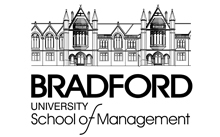I have written in the past about our fruitful relationship with the Bradford University School of Management, and would like to let you know about a fantastic project we have collaborated on recently.

Webanywhere linked up with a group of students at the School of Management looking at entrepreneurship. As part of their final project the students met with business leaders in the Bradford area to look at the real life challenges facing their organisations, and were tasked with creating solutions.
A major issue for Webanywhere at the moment is managing recruitment. We are growing fast with new vacancies being created all the time (check out our Careers page to see our current vacancies – as you can see there are plenty of opportunities for the best and brightest!). As a result, we set the students the challenge of how to recruit and retain employees who are aligned with our company values.
I hosted a visit from the group to our offices in Keighley, providing them with an overview of our history, our culture and values, and our goals for the future. Our HR team then worked closely with the group on the specifics of our recruitment process: the type of people we look for and the issues we face in ensuring we recruit those able to drive growth and innovation
The students interviewed staff face to face, sent out staff surveys, and compiled an incredibly insightful report featuring several eminently practical solutions to the challenges we face.
I was incredibly impressed with the results of our collaboration, and I was not the only one! This Telegraph and Argus article details the positive impact another group of students from the Bradford School of Management had on this year Positive Bradford campaign.
We will be keeping in touch with the group, as it contains some exceptional individuals with bright futures, who would fit right in here at Webanywhere. We are already working on a new project with web development students at the University on an interactive online recruitment tool – watch this space!



